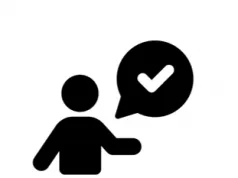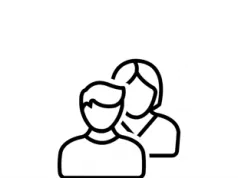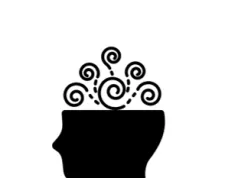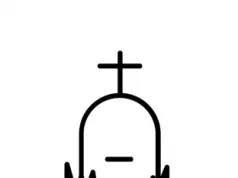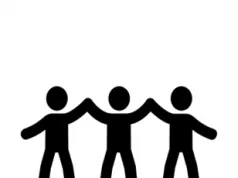Sigmund Freud and Carl Jung are two of the most famous names in Psychology. They helped to shape modern-day psychology, and have been integral in advancing the therapies that so many people use in this day and age.
Freud and Jung were initially close colleagues. While they drifted apart as the years went by, both made a strong impact. Whilst most of their theories followed a similar foundation, they diverged in several points, as summarised by this article.
Freud is best-known for founding Psychoanalysis – a theory that led to Psychoanalytical Psychotherapy and Psychodynamic Psychotherapy. Jung also played a role in Psychoanalysis, though his work is seen in Jungian Therapy.
The different elements of the mind
Freud and Jung both believed in the importance of the unconscious mind. However, they had different opinions on the specifics of the unconscious mind.
Freud believed the mind centred upon three areas – the id, the ego and the superego. These three forces connect with one another to help build a personality. The id is focused on survival, the superego has the intention of making sure a person behaves in line with moral and cultural expectations, and the ego mediates between the two.
Jung agreed that there were three parts to the human psyche, but he identified different parts. He believed the psyche comprised the ego, the personal conscious and the collective unconscious. Jung believed the ego is the conscious, the personal unconscious involves memories of the past, and the collective unconscious was likened to a reservoir which stored all human knowledge and experience.
Importance of the present
Freud and Jung had different opinions when it came to the impact that the past and present day has on a person.
Freud argued that mental disturbances happen due to historical factors – including events, memories or traumas. Therefore, these factors affect current mood and the general behaviour of a person.
However, Jung suggested the opposite was true. He believed that historical factors were important, but didn’t wholly effect the modern day. Instead, his focus was on the present day being a result of the past with respect to mental disturbances.
The Paranormal
Away from mental health, Jung and Freud had differing opinions on the paranormal. This is a topic that always results in intense discussion and debate.
Freud was a cynic, and had no belief at all in parapsychology or anything paranormal. Freud was insistent that they should not be related to Psychoanalysis.
However, Jung was very interested in the idea of the paranormal, and believed it formed an important part of psychology.
Jung was known to participate in séances. Furthermore, Jung famously spoke about a time when he and Freud witnessed a paranormal incident [1]. However, Jung stated that the duo had never openly discussed what they saw [1].
Dream Analysis
A key part in psychoanalytical therapy is dream analysis – which is the practice of analysing the patient’s dreams. Freud suggested that dreams were a manifestation of deep-rooted desires in a human, and can be linked to some kind of sexual desire. When awake, a person’s ego and superego prevent desires to be acted upon, but these weaken when a person sleeps, and therefore, the dreams offer a look into the unconscious mind and find a person’s true desires.
Jung disagreed with Freud’s assertion that content in dreams could almost always be linked back to sexual desires. Jung focused on dreams offering symbolic imagery of both the real world and a dream-like world, and that dreams could mean a number of things – and thus shouldn’t be fixed on certain meanings.
The practicalities of therapy
Freud and Jung also had different opinions on how therapy sessions should take place. Ultimately, their theories were designed to help people get better, but knowing how therapy sessions should take place is also important.
Freud believed it was important to frequently see patients. He suggested they should be seen on most days of the week. Jung suggested just two sessions a week would be necessary.
Moreover, Freud is seen as popularising the use of a couch for therapy – something that is seen in every media depiction of therapy to this day. Jung suggested face-to-face interactions were preferable, with eye contact important.
Freud is mainly associated with Psychoanalytical Psychotherapy and Psychodynamic Psychotherapy. Carl Jung is associated with Jungian Therapy. These therapies follow the same basic ideas.
Summary
Both Freud and Jung have interesting theories. They follow largely the same foundations, but they differ in more specific ways. Regardless, both theories are popular.
Unfortunately, both Freud and Jung have passed away. But their legacies will live on, with their theories still having an impact on mental health in the modern age.
See Also
- 5 Key Differences Between Sigmund Freud and Carl Jung
- What is the Difference Between Freud and Jung’s Psychoanalytic Theory?
- Carl Jung’s Collective Unconscious Theory and Mental Health
- Overview of Sigmund Freud and His Theories
- Freud and Mental Health
Disclaimer
This website should be used purely for informational purposes, and does not intend to, nor should it ever, be used as a replacement for professional medical advice.
We strive to keep all of our pages updated, and ensure that our website is full of factual and in-depth information. However, we encourage you to browse this website with care.
As a reminder, this website and all content within it cannot and should not replace the advice of a trained medical professional. You can read our full disclaimer at this link.
Helplines
If you are struggling with your mental health, help is available. With the right support and treatment, you can make a recovery. For information on helplines, or if you are in a state of crisis, please visit our crisis page by clicking on the relevant link for your geographical location (United Kingdom), (United States), (International). You can also see how to get mental health treatment and the process involved by clicking this link.
References
[1] Hydge, M (1991). Jung and Astrology: Catching the Golden Scarab. Unknown: Mandala.





